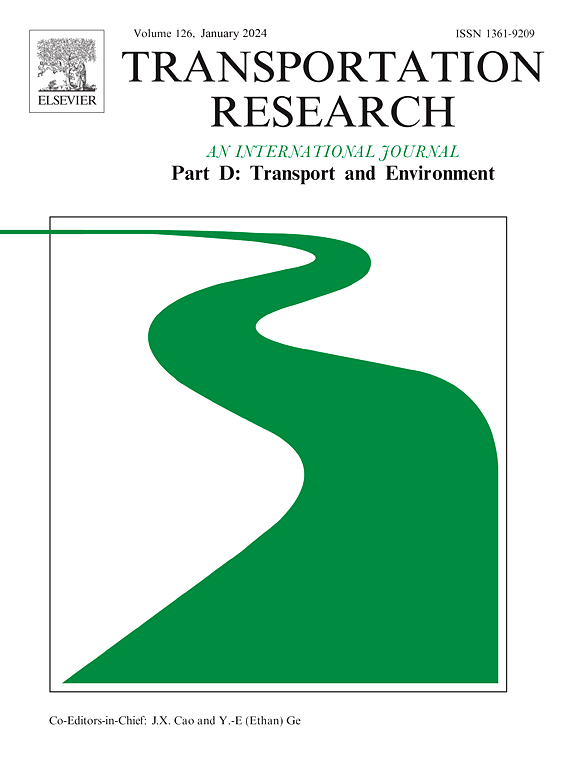Decarbonizing road transportation: Barriers and drivers in an emerging economy context
IF 7.3
1区 工程技术
Q1 ENVIRONMENTAL STUDIES
Transportation Research Part D-transport and Environment
Pub Date : 2025-04-11
DOI:10.1016/j.trd.2025.104723
引用次数: 0
Abstract
The transportation sector ranks as the second-largest contributor to global greenhouse gas emissions, primarily owing to its heavy reliance on fossil fuels. Consequently, the imperative to decarbonize transportation is paramount in the pursuit of sustainable development goals. However, despite its critical importance, research on decarbonization in transportation remains significantly limited. This gap in research is particularly glaring in developing countries, where there is a notable absence of studies addressing the decarbonization challenges within the transport sector. Addressing this research gap, this study aims to investigate the barriers and drivers influencing the decarbonization of the passenger transport sector in an emerging economy context, particularly for Bangladesh. The top three barriers identified include the ’Lack of concrete transportation policy’, ’Lack of decarbonization strategy/policy’, and ’Lack of biofuel refueling station/EV charging station’. These barriers are comprehensively analyzed based on various stakeholder perspectives. In terms of categorical barriers, policy barriers and technical barriers are predominant over other barriers. Despite these challenges, there is a growing interest in decarbonizing the transportation sector, albeit with some limitations. The primary drivers to decarbonize the transport sector include ‘Profitable return on investment’ and ’Government subsidies’. In terms of categorical drivers, economic drivers are dominant, followed by policy and social drivers. These findings are particularly relevant to the government bodies, users, manufacturers, and policymakers, offering valuable insights for navigating the complex landscape of decarbonizing passenger transport in emerging economies.
求助全文
约1分钟内获得全文
求助全文
来源期刊
CiteScore
14.40
自引率
9.20%
发文量
314
审稿时长
39 days
期刊介绍:
Transportation Research Part D: Transport and Environment focuses on original research exploring the environmental impacts of transportation, policy responses to these impacts, and their implications for transportation system design, planning, and management. The journal comprehensively covers the interaction between transportation and the environment, ranging from local effects on specific geographical areas to global implications such as natural resource depletion and atmospheric pollution.
We welcome research papers across all transportation modes, including maritime, air, and land transportation, assessing their environmental impacts broadly. Papers addressing both mobile aspects and transportation infrastructure are considered. The journal prioritizes empirical findings and policy responses of regulatory, planning, technical, or fiscal nature. Articles are policy-driven, accessible, and applicable to readers from diverse disciplines, emphasizing relevance and practicality. We encourage interdisciplinary submissions and welcome contributions from economically developing and advanced countries alike, reflecting our international orientation.

 求助内容:
求助内容: 应助结果提醒方式:
应助结果提醒方式:


